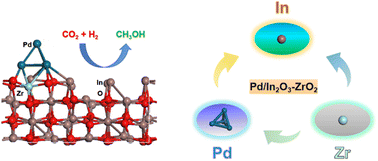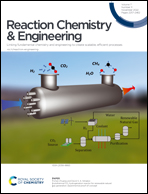The synergetic effect of Pd, In and Zr on the mechanism of Pd/In2O3–ZrO2 for CO2 hydrogenation to methanol†
Abstract
The hydrogenation of CO2 to methanol is of great significance from both the environmental and economic points of view. The excellent performance of Zr-doped or Pd-supported In2O3 catalysts has been reported in recent years. However, the mechanism of CO2 hydrogenation in the coexistence of Pd, In and Zr is unclear. In this paper, the density functional theory method has been used to explore the synergistic relationship between In2O3, Pd and ZrO2. The mechanism of methanol synthesis on the surface of the Pd/In2O3–ZrO2 catalyst has been studied. The results show that ZrO2 doping can increase the content of O atoms on the surface of In2O3, optimize the surface structure of In2O3, and strengthen the adsorption strength of CO2 molecules on the surface of In2O3. In addition, ZrO2 doping can reduce the bonding strength of the metal Pd cluster on the surface of In2O3, thereby inhibiting the formation of a PdIn alloy to maintain the efficient dissociation activity of metal Pd for H2. Both the HCOO route and the COOH route are important pathways for the synthesis of methanol by hydrogenation of CO2 molecules on the surface of the Pd/In2O3–ZrO2 catalyst, and the H2CO hydrogenation reaction is a key step in methanol synthesis.



 Please wait while we load your content...
Please wait while we load your content...